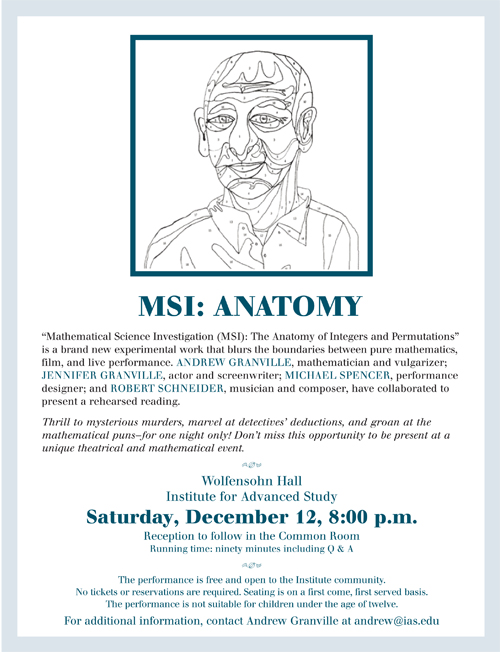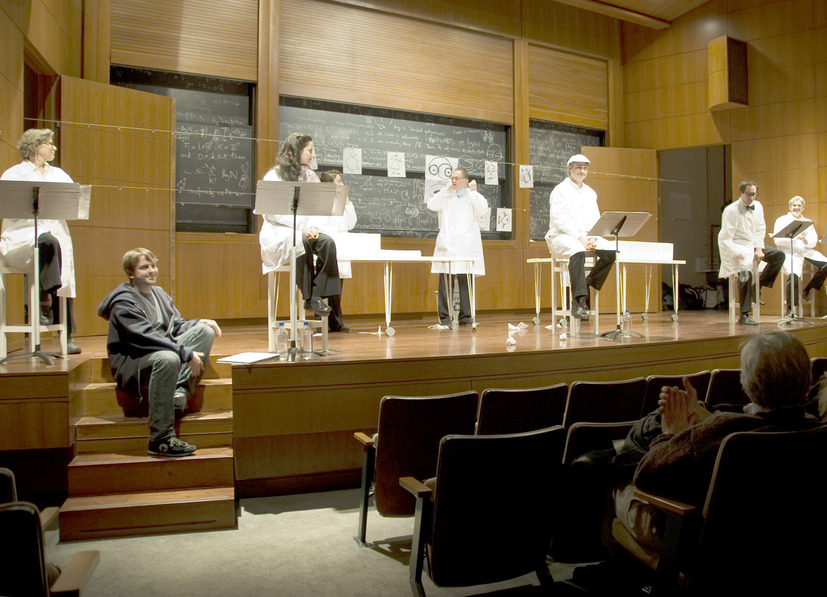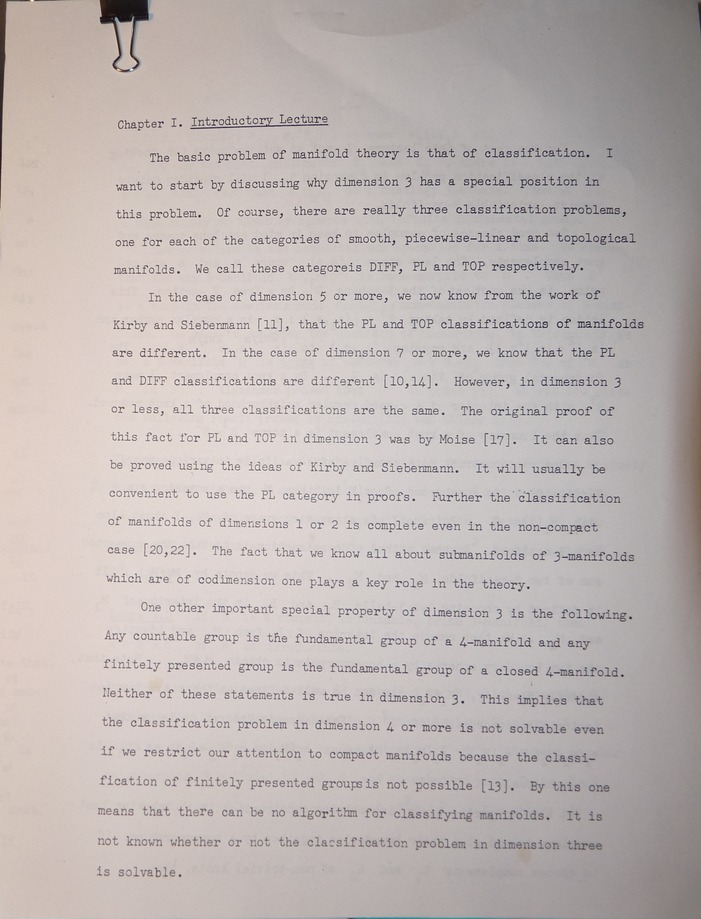(For those who missed them, the first day was about π, and the the second day was about ζ(2); what will the third day reveal… read on!).
According to Hadamard’s factorization for the “completed” zeta function
$latex \xi(s)=s(s-1)\pi^{-s/2}\Gamma(s/2)\zeta(s)$
(which is an entire function of s, and is invariant under the replacement of s by 1-s), we can write
$latex \xi(s)=e^{a+bs}\prod_{\rho}{\Bigl(1-\frac{s}{\rho}\Bigr)e^{s/\rho}},$
where the product runs over all non-trivial zeros of the Riemann zeta function (those in the critical strip), and a and b are some constants.
Now, as in Euler’s original definition of the Gamma function, it is tempting to replace the exponential terms by
$latex (1-1/\rho)^{-s},$
which leads to
$latex \xi(s)=\Delta^s e^{a+bs}\prod_{\rho}{\Bigl(1-\frac{s}{\rho}\Bigr)\Bigl(1-\frac{1}{\rho}\Bigr)^{-s}},$
with
$latex \Delta=\prod_{\rho}{e^{1/\rho}(1-1/\rho)}.$
(All these products converge absolutely for all s since the series with general term |ρ|2 converges). Now, since
$latex \xi(0)=\xi(1)=1$,
(easily remembered because the zeta function has a simple pole with residue 1 at s=1), we can plug in the value s=0 and s=1 to get
$latex 1=e^a,\quad\quad 1=\Delta e^b,$
which leads to what may be anachronistically called Euler’s second product for the Riemann zeta function:
$latex \xi(s)=\prod_{\rho}{\Bigl(1-\frac{s}{\rho}\Bigr)\Bigl(1-\frac{1}{\rho}\Bigr)^{-s}}$
(I have never seen this formula before, but of course it is very unlikely to be new!)
One may even mix this with Euler’s gamma formula
$latex \frac{1}{\Gamma(1+z)}=\prod_{k\geq 1}{\Bigl(1+\frac{z}{k}\Bigr)\Bigl(1+\frac{1}{k}\Bigr)^{-z}}$
and the well-known value Γ(1/2)=π1/2, which together give the nice expression
$latex \pi^{-s/2}\Gamma(s/2)=\frac{2^{1-s}}{s}\prod_{k\geq 1}{\Bigl(1+\frac{s}{2k}\Bigr)^{-1}\Bigl(1+\frac{1}{2k}\Bigr)^{-s}}$
from which we can incorporate the trivial zeros of the zeta function at -2, -4, -6, etc, in the product, and deduce
$latex \zeta(s)=\frac{2^{1-s}}{s-1}\prod_{\rho}{\Bigl(1-\frac{s}{\rho}\Bigr)\Bigl(1-\frac{1}{\rho}\Bigr)^{-s}}$
where the product runs now over trivial and non-trivial zeros!
Now, it is more than tempting to specialize the value of s; the first formula, for s=2, leads to
$latex \xi(2)=2\pi^{-1}\Gamma(1)\zeta(2)=\prod_{\rho}{\Bigl(1-\frac{2}{\rho}\Bigr)\Bigl(1-\frac{1}{\rho}\Bigr)^{-2}},$
or in other words to the relation
$latex \frac{\pi}{3}=\prod_{\rho}{\Bigl(1-\frac{1}{(\rho-1)^2}\Bigr)}$
where the product is — once more — over non-trivial zeros. Again, I would bet this has already appeared somewhere, but I had never seen it.
Using the table of the first 10000 positive ordinates of zeros of zeta (found here), one gets (putting in the complex conjugates, of course) the values
$latex 1.02737,\quad 1.04070,\quad 1.04569,\quad 1.04692$
with the first 10, 100, 1000 and 10000 zeros, respectively, compared with π/3=1.04720.


